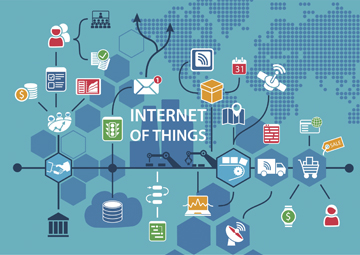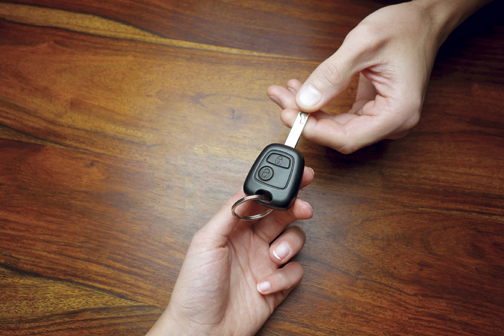ISO Emerging Issues Perspective
A look inside the IoT toolbox
On a scale of life’s intriguing questions, the subject of insurance probably rates a notch above dental exams and somewhat below births, marriages, and lottery wins. But hold on: Connected technology is rapidly making things more interesting. The Internet of Things (IoT) and its avalanche of useful data are rumbling into the insurance space. IoT brings the potential for reduced underwriting risks, lower policyholder costs, faster claims handling—and a transformation in the way all stakeholders view the insurance process.
Although insurance and IoT are sometimes hidden from our lives, both fulfill critical roles in managing risk—and how they work together will play a key role in how insurance evolves.
Such change doesn’t always announce itself. Most people have some form of insurance but often forget about it until the unwelcome renewal bill arrives. Similarly, IoT technologies have been integrated into many of our homes, cars and accessories and are often taken for granted until newer versions catch our fancy and have us reaching for our credit cards. Although insurance and IoT are sometimes hidden from our lives, both fulfill critical roles in managing risk—and how they work together will play a key role in how insurance evolves.
The expense and often overlooked value of insurance have led to two theories about its future: macro- and microinsurance.
- Macroinsurance theory is generally based on the idea that most risks could be bundled within a single policy. The reduced friction of having one solution for managing multiple risks could make insurance cheaper and more convenient.
- Microinsurance theory is typically premised on addressing a policyholder’s coverage needs in relation to a specific risk in exchange for a proportional premium, with simple and targeted policy language and delivery.
Which theory will guide the future of insurance? That depends in large part on the future of IoT.
Power of micro
IoT has been a critical driver of microinsurance adoption in developing nations, where few can afford to pay for unused commodities. In contrast to mature markets where IoT excesses such as “smart salt shakers” and “smart mirrors” compete for every last inch of market share, everyday IoT technologies in the developing world provide critical lifelines for those in pursuit of an occupation of micropreneurship, in which an entrepreneur manages a small startup business of his own creation. In Kenya, for example, where 75% of the population derives income from farming, mobile money such as M-pesa has allowed farmers to conduct business without constraints posed by traditional financial institutions. In turn, mobile penetration exceeds 90%, and smartphone uptake is near 50%.
Smartphones have also enabled the adoption of microinsurance against droughts, a farming risk throughout Africa and across the globe. Policies can be bundled onto mobile plans and then bound using scans of bar codes found on seed packages. Coverages can vary but may be limited to replacement seed in the event of a drought, simplifying coverage and potentially deterring fraud by using alternative loss settlement payment options. IoT point sensors complement smartphones by measuring rainfall and administering high-resolution automatic coverage, increasing settlement speeds and enforcing objective and fraud-proof payout criteria. IoT helps create, on a micro scale, the kind of “lean” experience, without bureaucratic interference, that many policyholders crave.
Witnessing these successes, traditional and startup insurers in domestic markets have increasingly considered IoT as an opportunity to cover new risks in low-penetration segments. One startup on-demand insurance platform provider reportedly has partnered with traditional carriers to offer smartphone-bound personal effects coverage with flexible policy periods.
Prompt payouts
Another provider uses sensors in vehicles to offer and administer pay-per-mile auto insurance, aligning price with exposure and appealing to low-mileage urban operators who otherwise may forgo driving (or insuring) because of cost. Still another startup offers automatic earthquake insurance capacity supported by geological survey data, among the earliest examples of connected sensory infrastructure. Payouts reportedly are handled by text message. Mobile distribution, small coverage amounts, and automatic payout, as described above, are hallmarks of the micro mindset.
The prevalence of IoT-enabled point solutions suggests that microinsurance may be the wave of the future. And once an IoT connection is made, insurers can scale it for potential offerings at the other end of the spectrum: macroinsurance.
For example, ridesharing activities generally look to a complex patchwork of commercial and personal auto insurance policies for applicable coverage. However, one startup provider is scaling the pay-per-mile concept for ridesharing operators, covering both commercial and personal exposures between when coverage is swiped on and swiped off a smartphone app. With cars, homes, and people becoming increasingly connected, there are few theoretical reasons why auto, home, life, health, and commercial risks couldn’t—or shouldn’t—be covered in a single policy. IoT provides tools to inventory and manage risks in real time, align price with exposure, and promptly administer payouts.
Consolidation holds the potential to cut costs as well as risk. One example is frozen pipe alerts that reportedly have saved hundreds of thousands in insurable loss dollars. But other practical limitations exist to IoT-enabled macroinsurance—including traditional business and regulatory models and massive stratification of the IoT ecosystem. Certainly a comprehensive and compliant telematics data exchange is a step in the right direction.
Microinsurance and macroinsurance are not as different as their names suggest, and we know that both leverage novel technologies such as IoT to improve the customer experience. Unfortunately, some insurance still exists in a “disconnected” middle ground marked by subjectivity, reliance on proxies, and arm’s-length interactions. This tends to result in covering some risks that may not be as prevalent and potentially inadequately highlighting critical risks.
What will insurance coverage look like in coming decades? The answer depends not only on the evolution of IoT but also on how the needs of policyholders change. Will IoT bring more awareness of risk and the need for more comprehensive coverage? Or will IoT help insureds more accurately identify the specific coverages they require? At this stage there’s no way to know the ultimate answer to that question. But one thing seems sure: With the growth of IoT, insurance will never be the same.
The author
Jim Weiss, FCAS, MAAA, CPCU, is director of analytic solutions at ISO, a Verisk (Nasdaq:VRSK) business.






